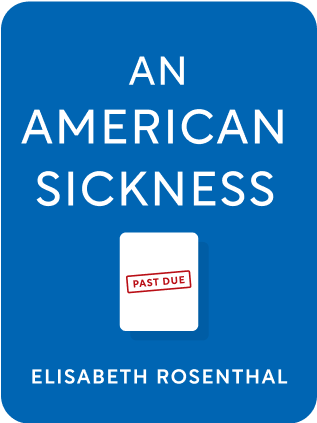

This article is an excerpt from the Shortform book guide to "An American Sickness" by Elisabeth Rosenthal. Shortform has the world's best summaries and analyses of books you should be reading.
Like this article? Sign up for a free trial here .
How did health insurance become for-profit? What were the first for-profit insurers to enter the industry?
Health insurance didn’t start out as a for-profit business. It began as an employer-sponsored incentive. However, as demand increased, for-profit insurers like Aetna and Cigna began entering the industry.
Keep reading to learn about the rise of for-profit health insurance and its pricing mechanisms.
How Did Health Insurance Become For-Profit?
Health insurance could have started as private and direct-to-consumer (as with auto- and life insurance), but one critical event in history prevented it from happening. During World War II, the National War Labor Board froze salaries. Normally, companies used higher salaries to compete for workers, but this was now forbidden. Instead, companies began offering health insurance, which wasn’t frozen.
As the demand for health insurance from employers increased, for-profit insurers like Aetna and Cigna entered the industry. For-profit health insurance providers were less bound by the mission statement of non-profit BCBS of “high quality, affordable health care for all.” For-profit insurers could segment the population, focusing on healthier patients and offering lower rates while excluding unhealthy patients.
In 1994, facing financial difficulty, the Blues’ board allowed member plans to become for-profit. The immediate intention was to raise funds in the stock market to stay afloat. Over time, the plans consolidated and grew, becoming today’s giants like Wellpoint and Anthem BCBS
What to Do About Health Insurance Costs
- Look at all the costs of insurance.
- Premiums
- Figure out what % you have to cover. If it’s deducted automatically from your paycheck, you don’t feel the full extent of the cost.
- Deductibles
- Are these calculated per person or for the whole family?
- Are there separate deductibles for in-network vs out-of-network care?
- Co-pays
- These are now often a % of the bill.
- For doctors, are the copays different for generalists vs specialists?
- For medicine, does the co-pay differ depending on whether it’s in the formulary or not?
- Out-of-pocket maximum
- Does this include drug costs?
- Will you be asked for co-pays even after meeting this number?
- Find the insurance with the lowest total cost for your typical needs.
- Premiums
- Choose between networks.
- Work backwards from your goals to choose the best option.
- Which doctors do you currently see and want to keep?
- Will your child go to college out of state – and will your insurance cover her?
- Which conditions are you most afraid of, and does your plan care cover it? For example, look for neonatal ICU or cancer treatment if those are what you’re concerned about.
- Be wary of dozens of doctors listed at a single address—often it’s a clinic affiliated with a hospital, and you may not be able to keep the same doctor each visit.
- If your network is small, consider untraditional doctors, like male OB/GYNs.
- HMOs now offer good comprehensive care with incentives for quality.
- Traits to look for: system-wide integration, salaried physicians with no productivity bonuses, meaningful use of technology, and a clear process for referral outside the HMO for rare conditions.
- If you see poor performance data from HMOs, this might be OK, depending on the context. HMOs are the rare medical systems that actually track standards and release data.
- Work backwards from your goals to choose the best option.
- Don’t trust insurance navigators fully – they have inconsistent training and may not be fully informed.
Systemic Changes to Demand
- Require insurers to maintain adequate doctor rosters across a spectrum of care in your local area. This will avoid out-of-network charges.
- Require network provider contracts to be in force through the term of policy. This prevents doctors from dropping out partway through your policy term.
- If a procedure is covered under plan, then all tests and services associated with that procedure should also be covered. You shouldn’t have an unbundled component that causes a surprise charge.
- Keep provider directories up to date with no nonsensical information (like the confusing “in-network but not available”).
- Require insurers to justify premium increases over 10% (the ACA did pass this).
- Require reference pricing.
- Set a total price for common procedures, then make this known to the patient. If the patient chooses care that exceeds the price, she pays the remainder out of pocket.
- This avoids the moral hazard of patients choosing extremely expensive care, once the cost exceeds the out-of-pocket maximum. This problem has led to $100,000+ hospital bills.
- Providers then compete to make sure they stay under this price
- Can peg to Medicare’s DRG
- Require sliding coverage based on necessity.
- Insurers can be required to completely cover necessary care (like appendectomies) while covering little of elective sinus surgery.
- They can also require waiting or choosing a lower-cost treatment before the more expensive surgery (for example, using 6 months of nasal steroids before sinus surgery.)
- Increase the use of bundled pricing.
- Medicare currently pays for inpatient stays via DRG (diagnosis related group) bundled rates.
- Since hospitals will only get reimbursed a specific amount, they need to consider whether discretionary care is essential in treatment. For example, they might question whether physical therapy after hip replacement is helpful.
- This model can also be applied to chronic conditions. For example, a hospital might get $50 per month for taking care of an asthma patient.
- In Maryland, all insurers pay the same rate for the same procedure on every patient.
- Important: the regulation needs to define clearly what is included in the procedure to avoid billing for outside services. For example, childbirth should include an epidural.
- Taken to the extreme, capitation is a model where hospitals are paid the same amount per patient, regardless of what treatments and services that patient requires during that year.
- Taken to another extreme, site neutral payments have fixed fees for care, regardless of whether it’s performed in a hospital or a doctor’s office.
- This system has complications and side effects.
- If sicker patients are given a higher flat payment, there is a strange incentive to push patients into diagnosis groups and to worsen their healthcare to keep them in that diagnosis group.
- Also, different groups are paid differently—hospitals are paid by DRG, doctors by RVUs, and nursing homes with a day rate. The groups would have to coordinate to package their services together.

———End of Preview———
Like what you just read? Read the rest of the world's best book summary and analysis of Elisabeth Rosenthal's "An American Sickness" at Shortform .
Here's what you'll find in our full An American Sickness summary :
- How U.S. healthcare got to the state it's in today
- Why it's so difficult to make any changes to the healthcare system
- What you can do to lower your personal healthcare costs






